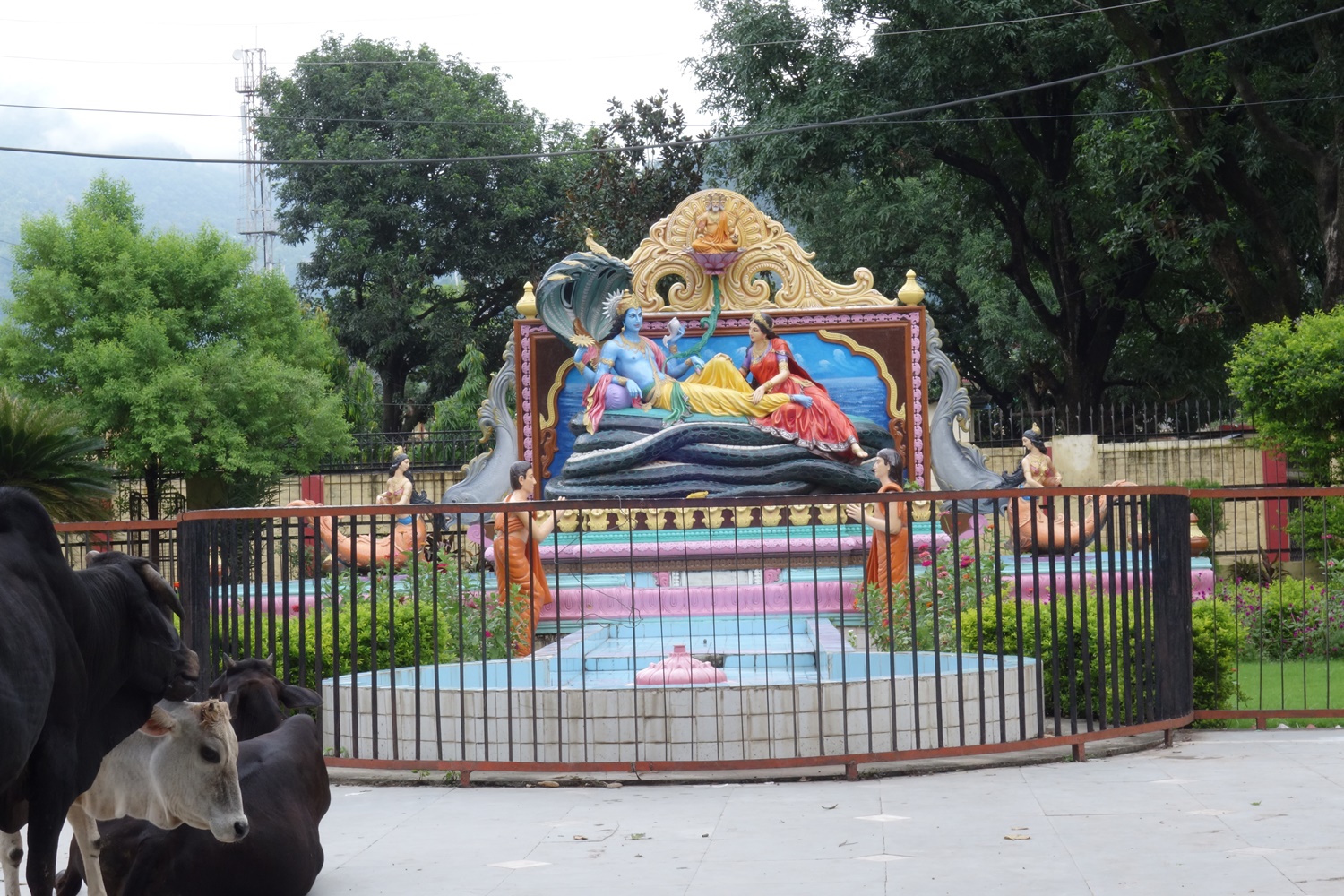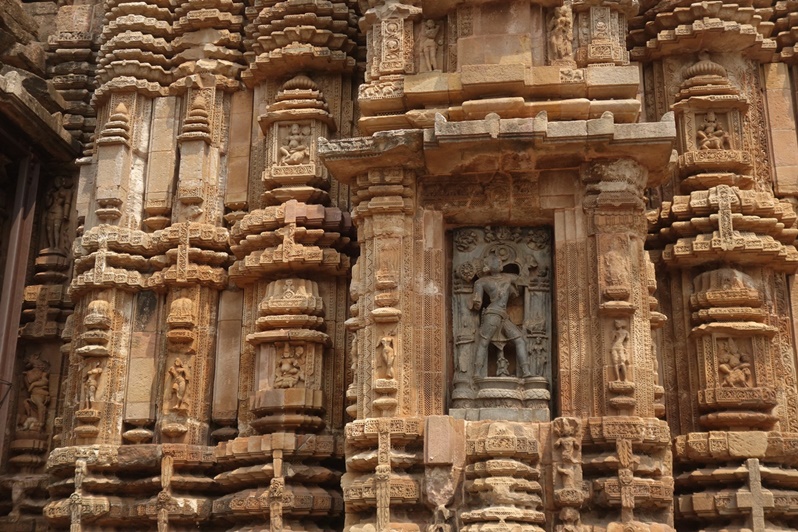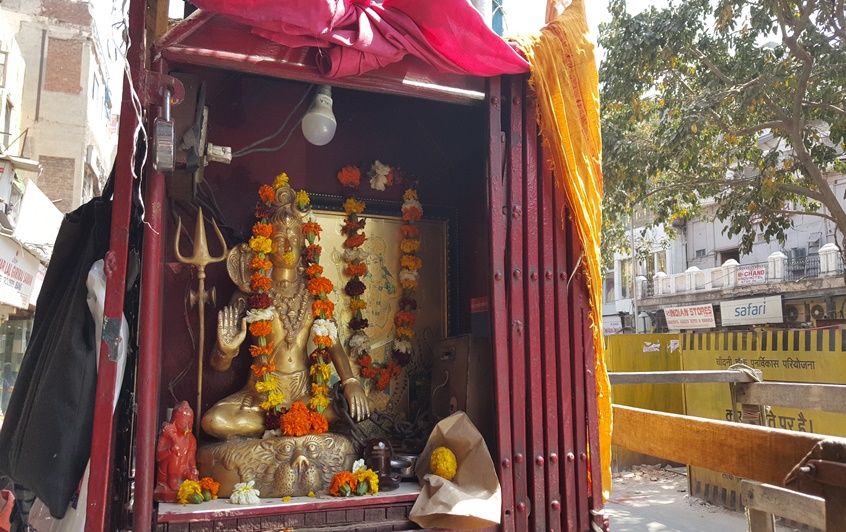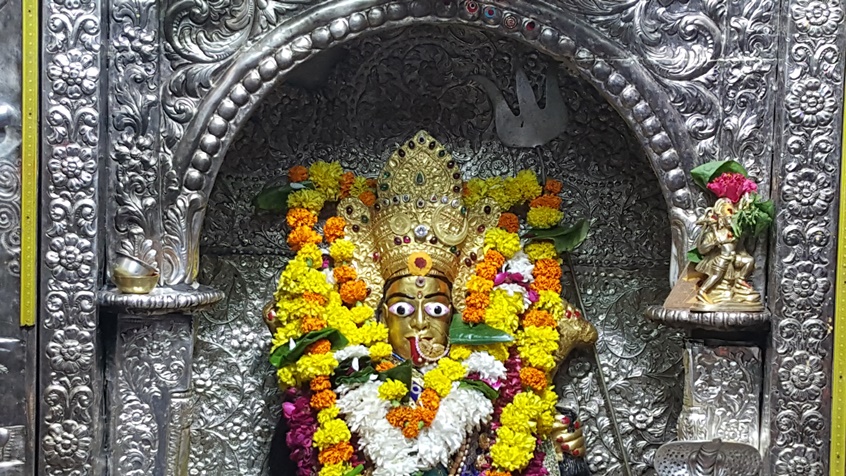
par Bertrand Bellaize, le 30 juillet 2020
Hindouisme - divinité hindoue : la Trimurti - Brahma
« Pour les hindous, l’Absolu existe soit sous une forme statique, non manifestée, au-delà de tout, qu’on appelle « nirguna brahman » (Brahman sans aucun attribut), soit sous forme dynamique, « saguna brahman (Brahman avec qualifications) qui nous apparaît comme le Dieu Créateur, Ishvara et qui se manifeste sous les trois formes de Brahma, Vishnou et Shiva. « (Arnaud Desjardins).
La Trimurti est donc le socle du message spirituel hindou qui permet d’expliciter le monde manifesté dans laquelle nous évoluons : Brahma représente le principe créateur, Vishnou, le préservateur et Shiva le destructeur qui permet le renouvellement. Puis chaque dieu ou divinité personnifie une des qualités de l’Absolu : Kama, le désir, Sati, la vertu, Hanuman, la force et le courage…. et comme les qualités du divin sont infinies, le nombre de dieux l’est aussi !
Ces 3 trois dieux primordiaux représentent les trois types d’énergie qui sont toujours à l’oeuvre dans le monde et opèrent ensemble conjointement : à tout instant, il y a création, maintien et destruction. C’est la loi du changement, du mouvement.
Dans le monde de l’espace-temps dans lequel nous vivons, tout change continuellement, se renouvelle, dure un certain temps puis se transforme… C’est le cycle de la matière (grossière ou subtile).
Brahma, le démiurge
Brahma est ainsi la première forme qui naquit de Brahman. Il est donc parfois nommé Swayambhu Brahma : né de lui même. La forme naît d’un désir, d’un désir de créer qui engendre l’action : bien entendu, la question fondamentale du pourquoi de ce désir né de l’Absolu, reste à jamais insoluble… et le mystère de la création demeure entier !
C’est donc lui la source de l’univers, le dieu originel. Dans les temps Védiques, ce fût surtout Ishvara qui joua ce rôle. Il est à l’origine de tout : il précède les dieux, la terre, l’eau….. tout ce qui est matière, visible ou pas.
Comme toutes formes étant l’Absolu manifesté, en perpétuelle mouvement, les rôles des dieux hindous ne sont pas figés : Vishnou, dans certains textes, tout comme Shiva peut jouer ce rôle de créateur.
Par ailleurs, au fil de l’évolution de l’hindouisme, ce principe créateur a été dévolu au principe féminin : la Shakti qui résulte de l’union des deux forces opposées (les Dvandas) : les deux faces de toutes formes, le concave et le convexe…
La création de l’univers dans la cosmogonie hindoue procède du cycle : un monde est crée, il dure un certain temps puis est détruit avant qu’un nouveau naisse issu du chaos de la nuit et ainsi de suite : au lever du jour Brahma crée un univers, et au coucher du « jour Brahma » il est détruit. Un jour Brahma correspond à 4 milliards trois cent vingt millions d’années ! Chaque jour est divisé en quatre ères, dénommé Yuga : de Krita Yuga, ou règne l’harmonie, l’abondance… on passe à des temps de moins en long et moins heureux pour arriver dans l’ère actuelle Kali Yuga (depuis -3102 avant J-C.) : désordre, ignorance… précédent la destruction du monde avant l’avènement d’un nouveau.
La naissance des Hommes
De la bouche de Brahma naquit Saraswati, le principe féminin, sa Shakti. De leur union naquit les Hommes et toutes les formes de vie. Saraswati est à la fois sa fille et sa femme (parfois dans certains textes Brahma se sépare en deux corps : masculin Swayambhu et féminin Saraswati). Il est intéressant de noter que l’humanité naît d’un inceste et cela crée une problématique. Ainsi dans les mythes, Shiva dût intervenir. Brahma tomba amoureux de sa création, Saraswati tenta de lui échapper dans toutes les directions mais Brahma créait à chaque fois une nouvelle tête : à droite, à gauche, derrière lui. Saraswati, se réfugiant dans les cieux, Brahma fit émerger une cinquième tête. Shiva qui méditait fut grandement dérangé, se mit dans une folle colère et la lui trancha d’un coup d’épée (ou d’un coup d’ongle... ). Shiva erra des années avant d’arriver à Varanasi pour expier l’acte le plus impur qui soit en Inde : le meurtre d’un Brahmane.
A Brahma est donc attribué le Guna Rajas, soit l’énergie créatrice, le désir d’agir, la passion, la force.
Les noms de Brahma comme celle des autres dieux hindous varient en fonction des attributs qu’on lui donne à cette occasion.
En tant que créateur, Il est tout d’abord Swayambhu Brahma. Puis Prajapatî Brahma, le progéniteur.
Il est aussi nommé Narayama, celui qui réside dans les eaux primordiales à partir desquelles,il créa le cosmos. Dans ce cas précis, c’est l’océan qui est primordial car cause de tout mais parfois c’est un œuf d’or.
Il est tour à tour appelé : le grand Maître, l’ordonnateur (Vidhi), celui qui façonne (Dhâtri), le maître du monde (Lokesha), l’impulsion divine (Dru-ghana), le grand architecte (Vishva-karman), Purusha, l’homme primordial, Prajapati, le seigneur des créatures….
A l’origine des Védas et de la connaissance
Puis de Brahma émergea les Védas recueils de textes sacrés datant de plus de 3000 ans qui sont au nombre de 4 : Rig-veda (recueils de poèmes), Samaveda (chants rituels), Yajurveda (formules sacrificielles) et l’Atharvaveda plus tardif (comprenant des aspects de pratique magique). Ils furent donnés aux Rishis qui les transmirent aux Hommes : ainsi l’origine de la religion hindouisme lui revient aussi.
On peut alors le nommer : Adikavi, le premier poète. le seigneur du verbe, Vishvakarman, Celui qui fait tout,
La forme de Brahma
Il est la plupart du temps représenté avec quatre têtes (c’est Shiva qui lui trancha la 5°), dirigés vers les 4 points cardinaux : il est omniprésent, omniscient. Dans ses quatre mains, il tient un livre, une pour chaque Véda, ou bien un chapelet, un pot à eau, une cuillère pour les oblations. Sa couleur est le rouge ou le rose.
Ses attributs sont tous en relation avec la connaissance et le rituel. Il est souvent représenté tel un homme dans la force de l’age, barbu, yeux mi clos en état de profonde méditation, assis sur sa monture l’oie sauvage ou un cygne (qui indique la connaissance et le discernement, la faculté à séparer le bon du mauvais. Les légendes indiquent que le cygne est capable de séparer le lait de l’eau ! De part sa forme, il évoque la grâce, la beauté) mais aussi parfois sur un lotus.
Il peut alors être nommé : Catur-anna (4 têtes), catur-mukha (4 visages), Hamsa-vahana (cavalier de l’oie)...
Le culte de Brahma
En Inde, de nos jours, Brahma n’est pas vénéré sauf dans quelques lieux tel Pushkar au Rajasthan, Pondichéry ou Thirunavaya au Kerala.
Bien entendu de nombreuses sculptures de Brahma ornent les temples dans toutes l’Inde mais sans qu’il en soit la divinité principale qui y est honorée.
En effet Brahma ne s’occupe pas des affaires des hommes et très peu de celle des Dieux. Il habite sur le mont Meru, centre de tous les mondes (les Loka). Son rôle de créateur est terminé. Personnifiant l’Absolu, il est difficile de le choisir comme Ishata Devata et ses rituels concrets.
Cependant certains mythes et surtout la malédiction de l’inceste et de Saraswati expliquent de beaucoup l’éloignement des fidèles de Brahma.
De plus l’hindouisme explicite que toute forme possède deux aspects opposés et Brahma n’y échappe pas et sa force créatrice engendre aussi des forces «négatives» : excès de création, démesure, orgueil... soit un manque de limites, une place trop importante donnée à l’action, au désir qu’il convient de maîtriser. Car dans l’hindouisme moderne, la Sadhana, le cheminement spirituel consiste à se libérer de l’identification à l’égo qui se manifeste principalement par le désir dont il s’agit d’être libre.
Aujourd’hui cet aspect divin, le guna Rajas est vénérée à travers la Shakti.
Sources
Arnaud Desjardins – Au delà du Moi – Editions La table ronde
Sarah Combe - Un et Multiple – Editions Dervy


